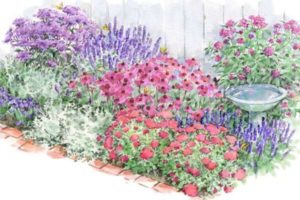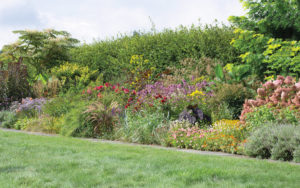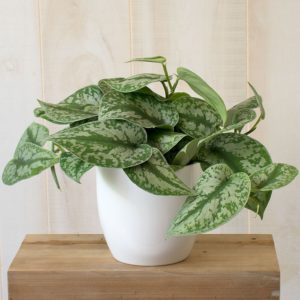Foundation plants – the shrubs and other plants that are positioned in front of a house – do more than add color and seasonal interest to the exterior of a home. Chosen well, they:
- Serve as an expression of a homeowner’s style
- Enhance or mirror the architectural style of the house
- Give a residence a settled, finished look
- Increase the value of a property while upgrading the look of the neighborhood
Stand at a distance from your front door and survey the foundation plants that surround your entrance. Do they enhance the style of your home? Do they incorporate a mix of colors and textures? Do the plants offer interest in all seasons? Are they sized properly for the space? Jot a few notes and consider whether it’s time for a bit of rejuvenation or perhaps a total redo.
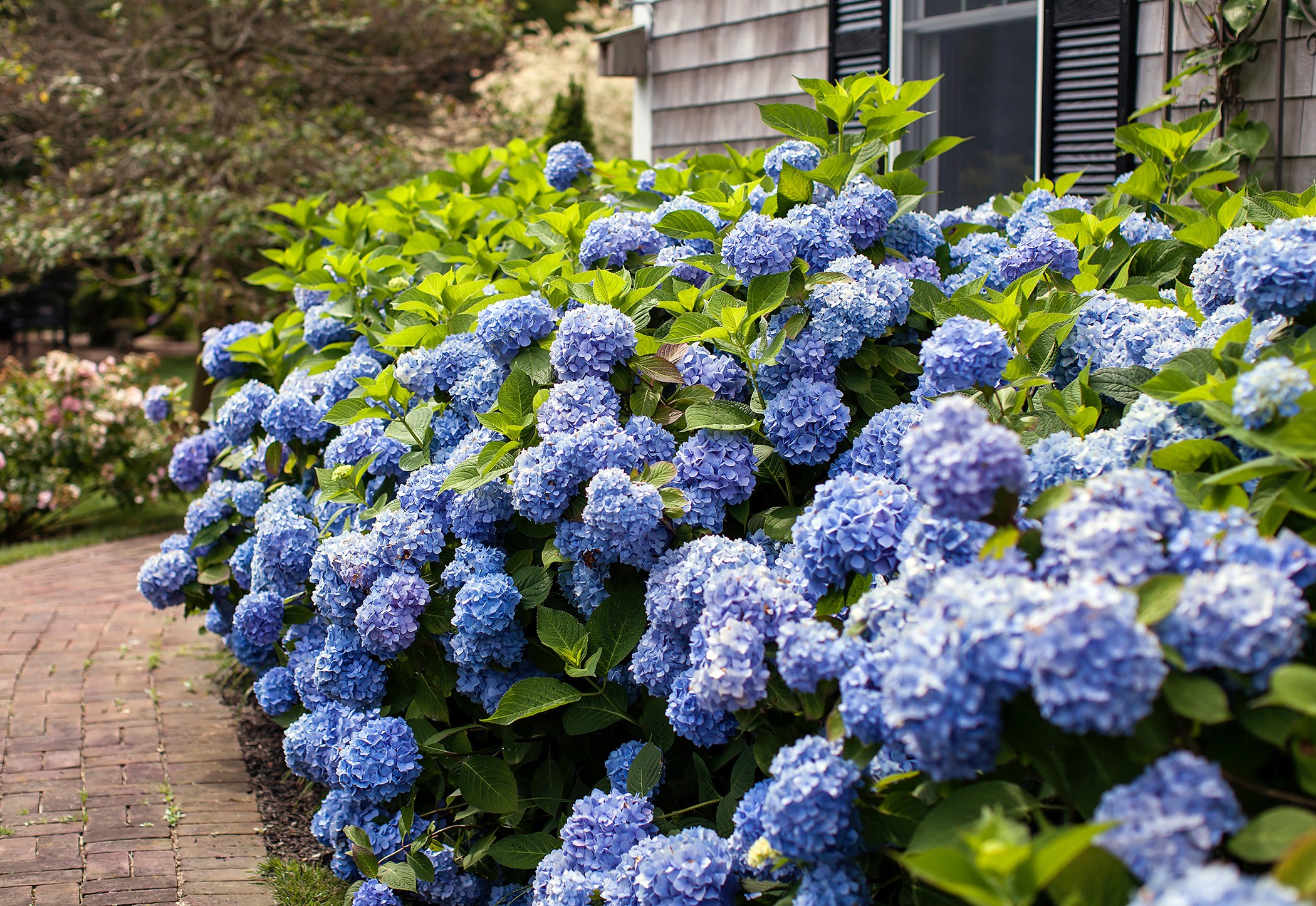
When choosing foundation plants for your house, it’s important to consider the following:
Exposure: Be aware of how much sun or shade you have in front of your home and choose plants that will thrive in those conditions.
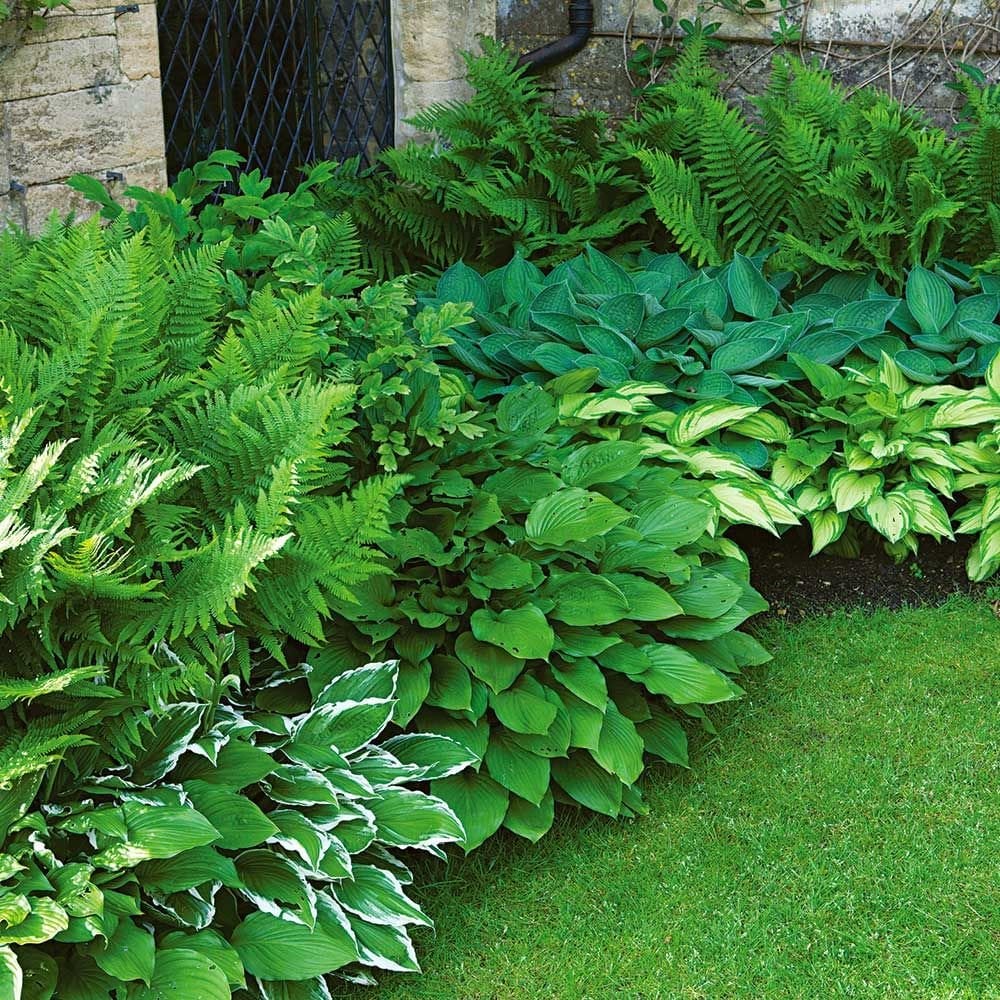
Style: Is your home formal in design or more casual? Is it a period dwelling or newer build? Consider choosing plants that reflect and enhance the architectural style of your house. A seaside bungalow would look great surrounded by Hydrangeas, Ornamental Grasses, and Shrub Roses. A Colonial of any vintage might best be enhanced by evergreens and more formal plantings. A contemporary ranch might look just right with a cushion of cloud-pruned evergreens and Japanese Maples softening its edges.
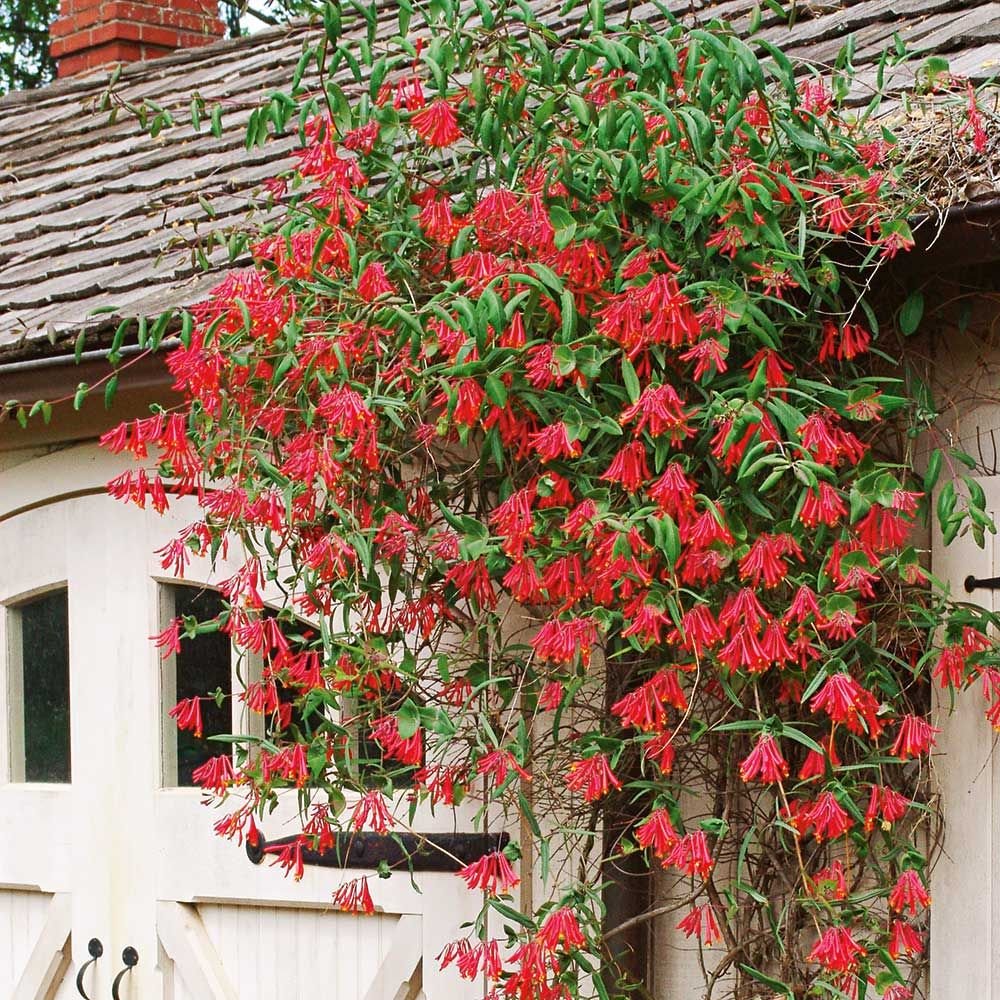
Maximize Your Views: As you consider various plants, keep in mind the style of your home’s interior design and remember that the exterior serves as a prelude to what happens indoors. If the windows of your home look out on some of the plantings, choose and site plants that enhance these views. Frame an ornamental tree or shrub in a window. Choose some fragrant shrubs for spots beneath windows that are likely to be open in fair weather. Also be careful not to choose plantings that will block a view. Instead, make the most of sight lines and choose plant sizes, colors, and styles accordingly.
Mature Size: When selecting any plant for the front of your home, keep in mind its eventual mature size. The 1-gallon shrub you plant today may reach 8’ tall in a few years. Choose and site your plants accordingly so they have adequate space to grow and so the mature plant will fit the space.
Seasonal Interest: The best foundation plantings provide interest in all four seasons. Consider mixing plant types to create a succession of “moments.” Evergreens can be used to provide year-round color and form. They also serve as a handsome backdrop for a show of spring-flowering bulbs. Spring- and summer-flowering shrubs take their turns adding attractions around your front door. End the season with perennials and shrubs that provide dramatic autumn blossoms or leaf color. In this way, your foundation plantings are never static. They change with the seasons just as you might change a wreath on the front door or the decorations in your yard.
Color: Choose a color palette that plays well with your house. You might opt for a complementary color scheme or a contrasting one. Remember that simpler can be better. Limit the number of colors you incorporate into your landscape and repeat them in different forms and sizes. Limiting the number of colors helps produce a unified, curated look.
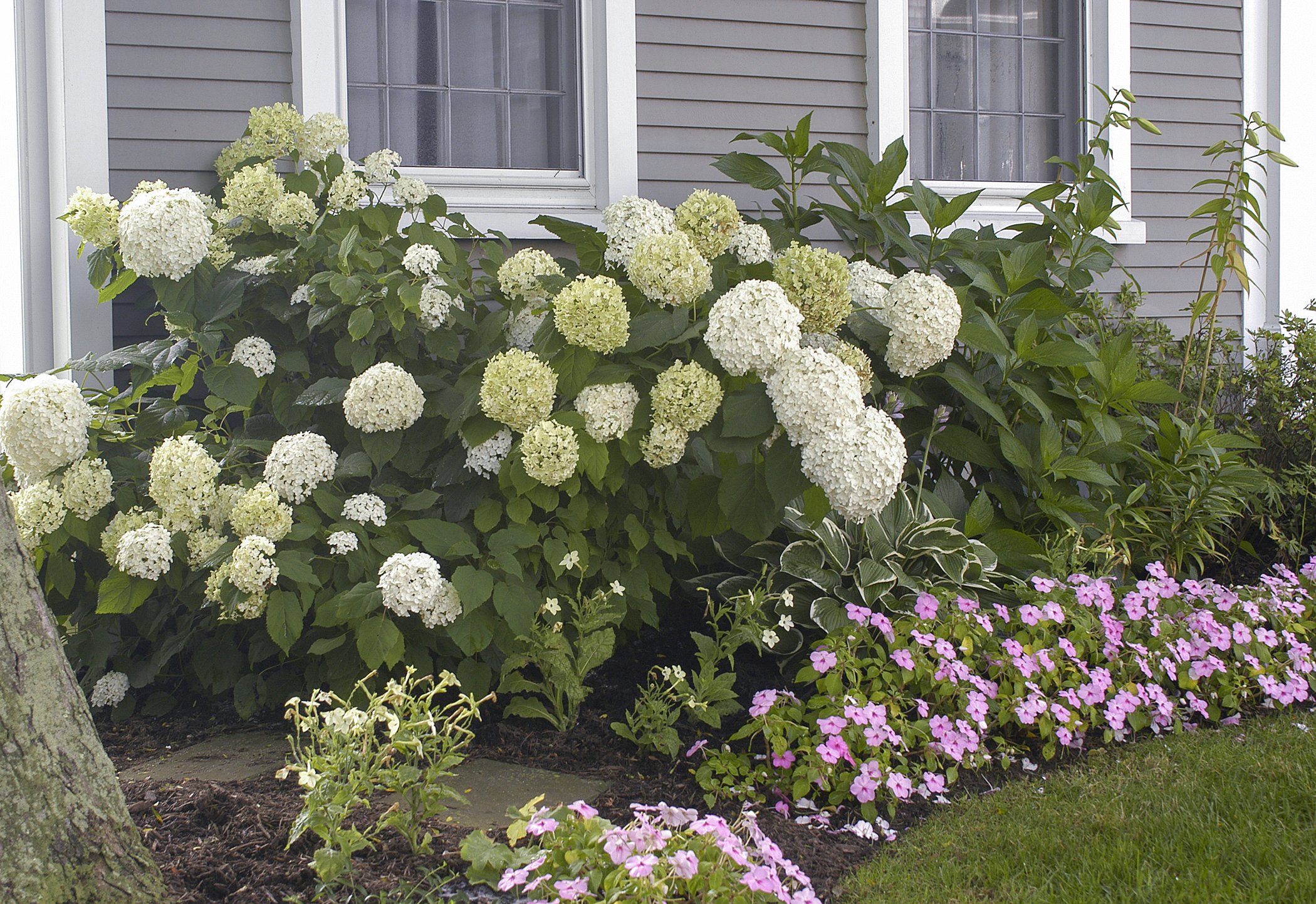
Textures & Forms: Choose specimens that offer a variety of textures (fine, feathery, grassy, broad-leaf) and silhouettes (mounds, pyramids, pillars).
Layers: The most successful foundation plantings create layers of interest by incorporating plants of various heights. Small ornamental trees or upright evergreens can be used as the largest elements. Mid-size shrubs fill in the mid-range. And perennials in a broad array of sizes and forms – from tall grasses to low-growing ground covers – can all be interwoven to complete the picture and fill in gaps.
Whichever plants you choose for your home, they are sure to add beauty and curb appeal to your property. Nothing says ‘welcome’ quite like an inviting entrance.

